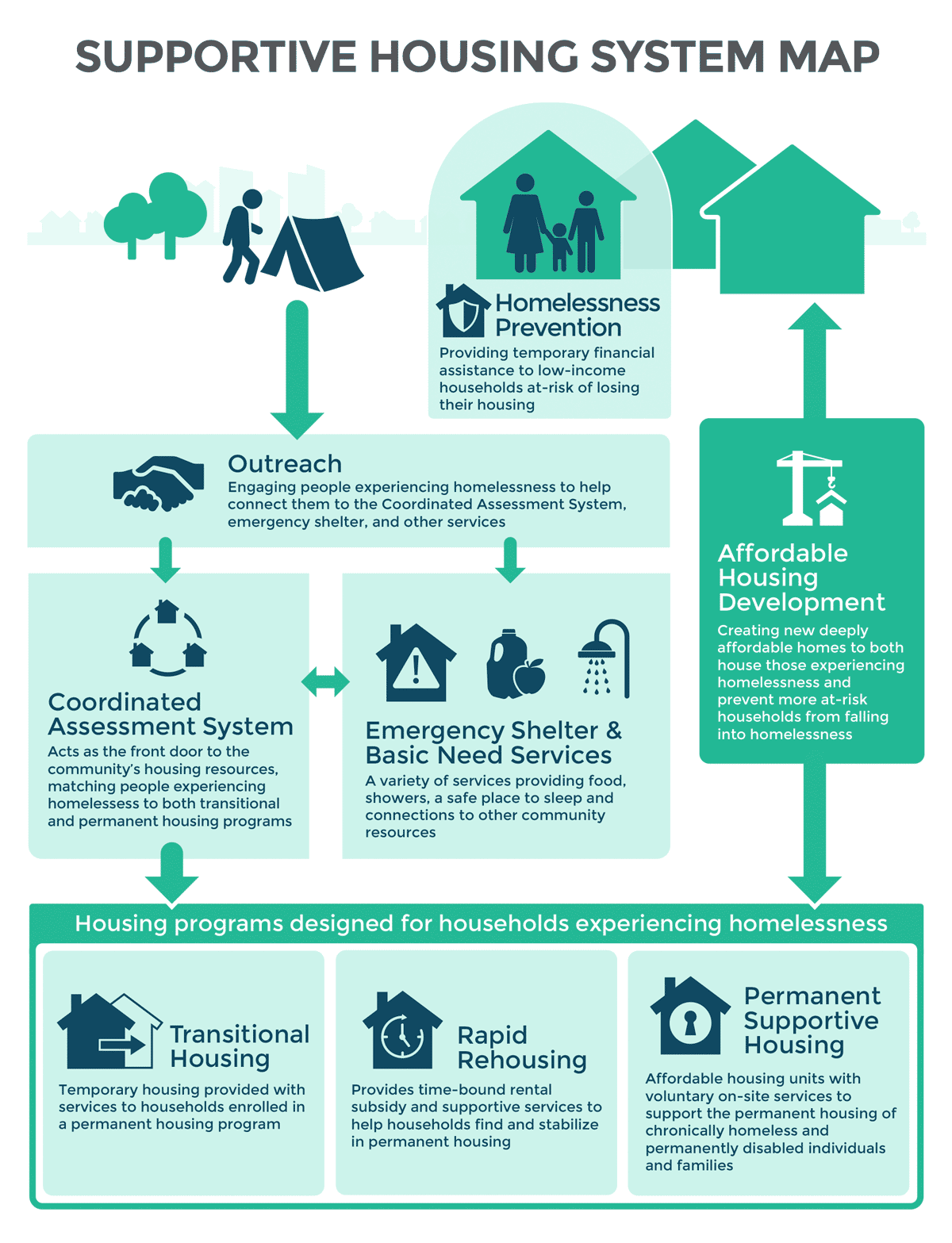Our Community's
Supportive Housing System
Homelessness can be solved – but it will take a community effort, from a wide array of partners. That’s why a broad coalition of stakeholders in Santa Clara County have come together to implement a coordinated, system-wide response to homelessness, which we call our Supportive Housing System.
Santa Clara County’s Supportive Housing System is a true manifestation of our community’s collective impact model – integrating the individual efforts of our many Continuum of Care partners into a cohesive system, with the County of Santa Clara serving as the lead partner.
Launched in 2015 and guided by the strategies of our Community Plan to End Homelessness, the system provides a continuum of programs and services to meet the needs of those either experiencing or at-risk of homelessness. The system not only includes a wide range of interim, transitional and permanent housing strategies, but the many other programs and services needed to help reach and serve residents in-need:
A key element of our Supportive Housing System is our utilization of coordinated assessment: a community-wide intake process used to connect homeless individuals with the resources and programs available through the system. In Santa Clara County, all homeless people seeking assistance complete a standardized assessment tool (the Vulnerability Index-Service Prioritization Decision Assessment Tool or VI-SPDAT) that considers the household’s situation and identifies the best type of housing intervention to address their situation. This has provided a consistent and streamlined way for evaluating people in-need across our county and ensuring that our community is properly prioritizing those with the highest needs.
Critical Funding for Housing Interventions
Given the lack of housing options in our community, a key focus of our strategy is to build more affordable housing. In 2016, voters approved a countywide $950 million affordable housing bond, known as Measure A, to fund the development of housing interventions proven to prevent and reverse homelessness. The resource has served as a key driver of affordable housing development for our lowest-income and most vulnerable residents, and is ahead of schedule in creating 4,800 new affordable homes. Learn more about the Measure A housing bond.
Collective Impact in Action
By working together toward common goals, this Supportive Housing System has made significant strides in preventing and ending homelessness. Since 2015, a broad coalition of government, business, non-profit and philanthropic partners have come together to help more than 25,000 individuals experiencing homelessness obtain and maintain stable housing.
Through the new 2020-2025 Community Plan to End Homelessness, we’re taking a much more expansive approach that includes not only scaling our successful permanent housing solutions, but taking both immediate steps to address our unsheltered crisis and longer-term actions that address the root causes of homelessness. And we’ve already made important progress towards our aggressive 5-year goals.
Thanks to this coordinated effort, we’re seeing important signs of progress in our efforts to end homelessness. Despite this progress, we still have a long way to go to meet the need in our community and achieve our goal of ending homelessness in Santa Clara County. So, in the years ahead, we will continue building upon our efforts to create a state-of-the-art supportive housing system that serves even more vulnerable residents each year.
You can learn more about some of our community’s key housing programs and interventions by visiting our Solutions to Homelessness webpage. Additional details on the Supportive Housing System, including performance metrics, can be found on the County of Santa Clara Office of Supportive Housing website.







